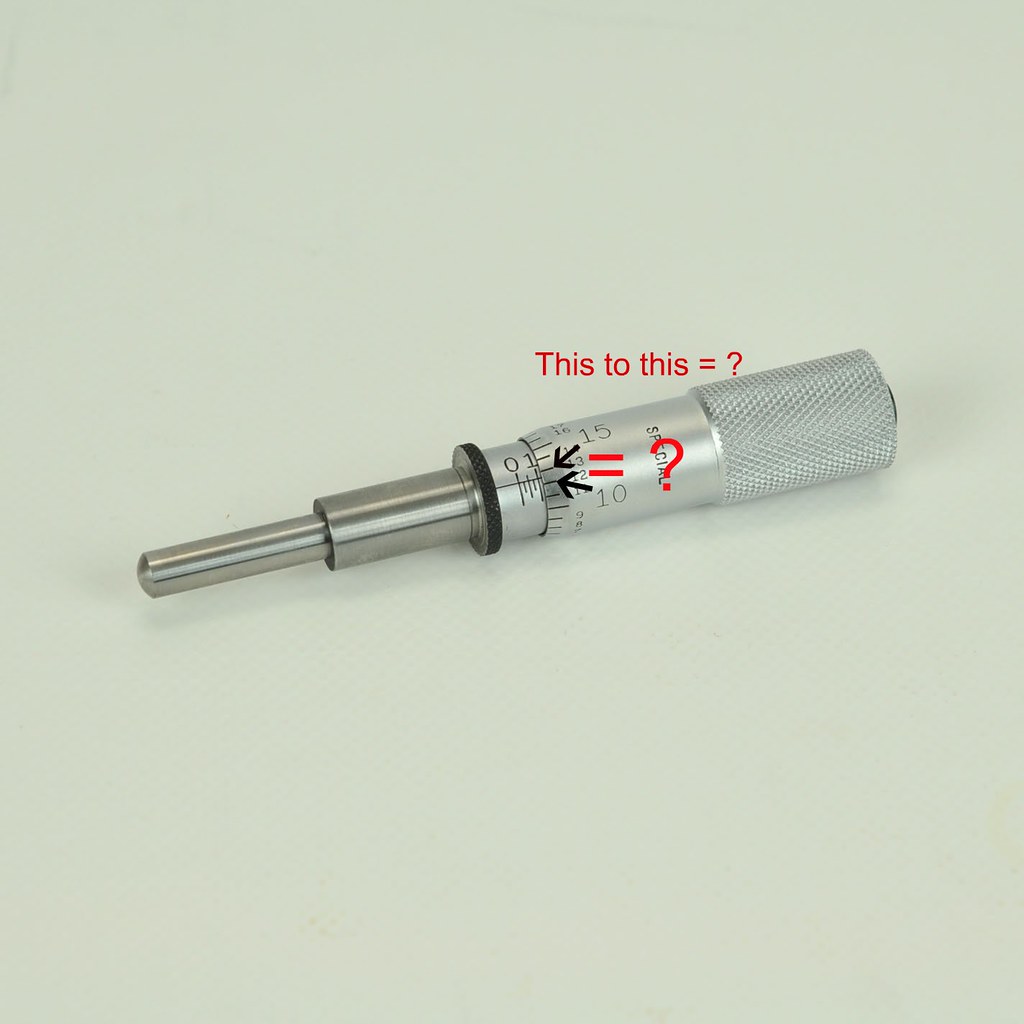Here is the base.
followed by a picture of an Owl, that _is_ funny!
Moderators: rjlittlefield, ChrisR, Chris S., Pau
You need to calculate the DOF for your lens and bellows extensionyeatzee wrote:Ok back to the topic
How do you know what increments to use for each stack? Also how do I know how much each little tick on the micrometer represents?

Awesome, thanks!rjlittlefield wrote:The increment appears to be 0.001 . There should be 25 increments per rotation, each rotation moving the spindle by one small division on the linear scale. Each small division on the linear scale is 1/4 of 0.1, hence 0.025 . Your increments were 0.002", roughly 0.05 mm.
Your magnification was around 4.8 (=135/28, for the lens combo), and your effective f-number was then about f/23 (=4*(4.8+1), f_r*(m+1) ). Using standard formulas and a Circle of Confusion value = 0.030 mm, the calculated DOF is then 2*C*f_r*(m+1)/m^2 = 0.06 mm.
Sounds to me like you were pretty much dead on -- small enough, not too small.
--Rik
Yes, 0.001" per increment. 0.0254 mm = 25.4 µm (microns).when you say it looks like .001 increments do you mean .001 mm or .001"? The latter right?
My guess would be that it's something like "Good grief what am I getting myself into?!I don't know how to say what im thinking
Could you elaborate more on this? Looks interesting!SONYNUT wrote:or this........
http://www.photomacrography.net/forum/v ... highlight=